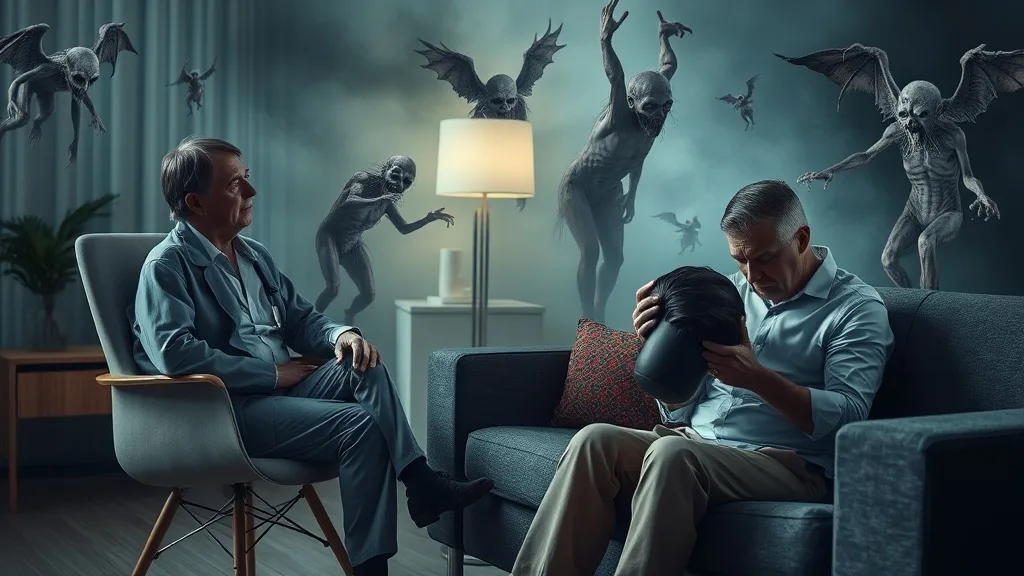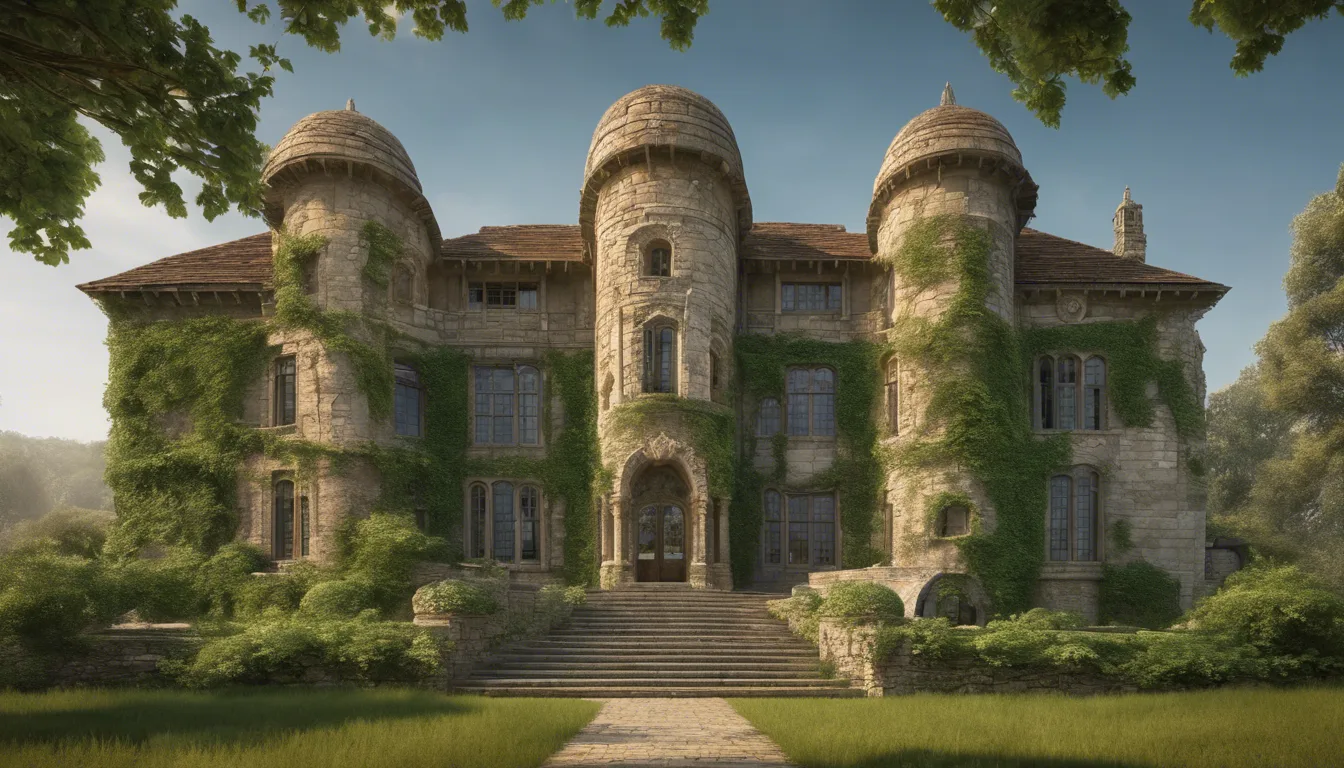7 Demographics of Individuals Susceptible to Dreaming of Mad Spirits
Want a Personalized Dream Interpretation?
Curious about how people like you interpret this dream symbol? Explore personalized interpretations tailored to your demographic. Get personalized insights for free!
Get Free Interpretation Now →Table of Contents
1. People Experiencing Mental Health Conditions
For those navigating the complexities of mental health conditions, dreams often become a mirror reflecting their inner turmoil. Among the myriad of symbols that populate our nocturnal tapestry, the image of "mad spirits" carries a profound significance, a manifestation of the chaos and unrest that can accompany mental distress.

These spirits, often perceived as menacing or malevolent, represent the internal struggles, doubts, and fears that torment the waking mind. They can embody feelings of isolation, stigma, or a sense of being overwhelmed by invisible forces. In their twisted forms, they may mock the dreamer's vulnerabilities or whisper insidious suggestions, fueling the cycle of anxiety and despair.
Yet, within the depths of these dream visitations lies a glimmer of potential insight. Mad spirits can serve as a mirror, reflecting aspects of the dreamer's psyche that they may have been resisting or neglecting. By confronting these spirits, the individual can gain a deeper understanding of their own struggles and find paths towards healing and recovery.
2. Individuals with Cultural or Spiritual Beliefs
For those deeply rooted in cultural or spiritual practices, dreams involving mad spirits carry significant weight. These visitations are often interpreted as messages from ancestors or deities, offering guidance or warning. They may also symbolize the presence of malevolent forces that need to be appeased or confronted.
Depending on the cultural context, mad spirits can represent a range of emotions and experiences. In some traditions, they embody the chaos of the subconscious, while in others, they symbolize the unchecked passions or desires that can lead to destruction. Dreams that feature mad spirits often prompt individuals to reflect on their own inner turmoil and the need for spiritual cleansing or healing.
3. Survivors of Trauma or Stressful Events
Mad Spirits: A Wake-Up Call for Trauma Survivors
For those who have endured the harrowing experiences of trauma or stressful events, the dream world often becomes a sanctuary and a battleground. Amidst the surreal landscapes, traumatic memories can manifest as malevolent spirits, relentless pursuers that haunt the dreamer's psyche.
These mad spirits represent the overwhelming emotions and destructive thoughts that trauma survivors grapple with. Their twisted forms and terrifying presence reflect the shattered psyches and profound sense of vulnerability that survivors often carry.
Through these dream symbols, survivors are confronted with the lingering wounds of their past. The spirits force them to confront their deepest fears and insecurities, triggering flashbacks and emotional turmoil. Yet, within the realm of dreams, survivors also find a glimmer of hope.
The pursuit of mad spirits symbolizes the need to acknowledge and process the trauma. It is an invitation to confront the past, to heal and reclaim their power. By facing these formidable entities, survivors can begin to exorcise the demons that haunt them, finding solace and strength within the depths of their own resilience.
4. Creatives and Imaginative Thinkers
For the imaginative, mad spirits in dreams tap into a rich inner world. They represent untamed creativity, boundless imagination, and the transformative power of the subconscious mind.
These dream figures often guide Creatives and Imaginative Thinkers through their artistic journeys, inspiring innovative ideas and unconventional perspectives. They challenge established norms, embrace the bizarre, and encourage exploration of the unknown. Through their encounters with mad spirits, these dreamers find solace in embracing their eccentricities and pushing the boundaries of their imagination.
Moreover, mad spirits symbolize the raw and untamed aspects of the psyche, reminding dreamers of their connection to the primal and instinctual. They serve as a catalyst for personal growth and self-discovery, urging dreamers to confront their inner demons and embrace their shadow selves. By embracing these mad spirits, Creatives and Imaginative Thinkers unlock a wellspring of inspiration and authenticity, fueling their artistic endeavors and expanding their horizons.
5. People with a History of Occult Involvement
For individuals with a history of occult involvement, encountering mad spirits in dreams can be a transformative experience. These malevolent entities often symbolize deep-seated fears, unresolved trauma, or lingering spiritual attachments.
The appearance of mad spirits can evoke overwhelming emotions of terror, chaos, and powerlessness. They may manifest as grotesque figures, animals, or even familiar faces distorted into something sinister. Their presence can drain the dreamer's energy, leaving them feeling disoriented and vulnerable.
These dreams can be a manifestation of the dreamer's inner demons, which have been suppressed or ignored due to occult practices. The subconscious mind uses the dream state to release the pent-up emotions and confront unresolved issues.
It's important to remember that these spirits are often symbolic and represent the dreamer's own fears and weaknesses. They can serve as a warning to address repressed emotions or seek professional help to work through the underlying issues.
Dreams of mad spirits can also indicate the presence of negative entities or attachments that have been attracted to the dreamer's energy during their occult involvement. These entities can feed on fear and instability, making the dreamer more susceptible to spiritual attacks.
If you are experiencing dreams of mad spirits, it's crucial to:
- Acknowledge the emotions and fears they trigger.
- Seek support from a trusted therapist or spiritual guide who understands the occult.
- Engage in spiritual practices or rituals that protect and cleanse your energy.
- Remember that you are not alone and that seeking help is essential for personal growth and healing.
6. Those Who Frequently Consume Stimulants or Hallucinogens
Dream Symbol: Mad Spirits for Those Who Consume Stimulants or Hallucinogens
If you frequently indulge in stimulants or hallucinogens, your dreams may be inhabited by "mad spirits." These otherworldly entities represent the heightened emotional and mental states induced by these substances.
Their erratic behavior mirrors the unpredictable nature of your drug-altered experiences. They may appear as grotesque figures, symbolizing the distortion of your perceptions. Alternatively, they could be benevolent guides, offering insights into your inner turmoil.
Pay close attention to their actions and messages. They may reflect your anxieties, fears, or desires amplified by the substances you consume. Embrace their presence as a chance to delve into the depths of your psyche and confront your deepest truths.
7. Individuals Prone to Nightmares or Sleep Disorders
For individuals prone to frequent nightmares or sleep disorders, dreams of mad spirits often symbolize internal turmoil and psychological distress. These spirits can represent repressed fears, anxieties, or unresolved trauma that manifest in the subconscious during sleep.
These dreams often evoke intense emotions, such as fear, panic, and a sense of being pursued or threatened. They may also indicate underlying sleep disturbances, where the body and mind are unable to fully transition between wakefulness and sleep.
Additionally, these dreams can be influenced by genetics and individual brain chemistry. People with a history of sleep disorders or nightmare disorders may be more likely to experience dreams of mad spirits due to heightened activity in the amygdala, a brain region involved in fear and emotional processing.
Understanding the symbolism behind these dreams can help individuals manage their sleep disorders and work towards resolving underlying emotional and psychological issues.
Back to interpretation of mad spirits



